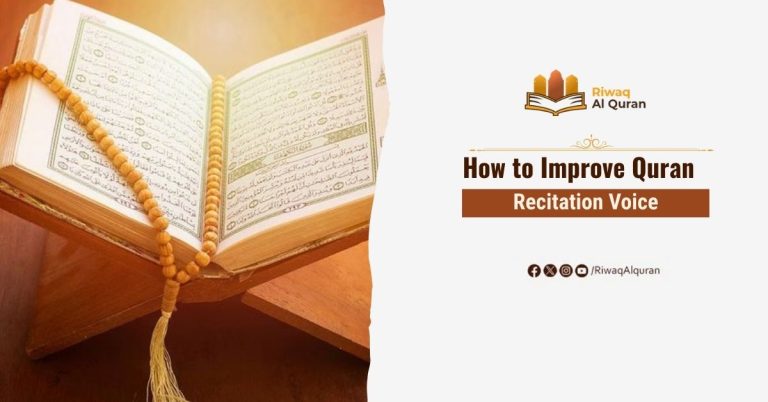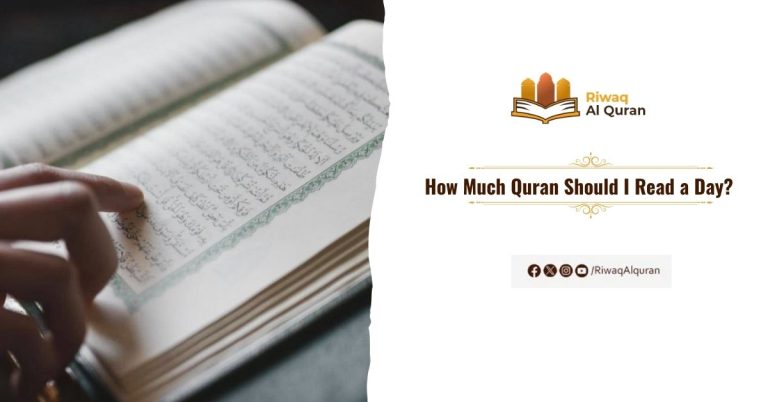Maghrib prayer, the fourth of the five daily prayers in Islam, is performed just after sunset. It’s a time for Muslims to pause and reflect on their day, offering thanks and seeking guidance for the evening.
Keep reading this guide to learn more about how to pray Maghrib, as it is tailored for beginners, offering a friendly and detailed approach to each step, including the practices before and after The Maghrib prayer. Here We Go!
Table of Contents
What Is Maghrib Prayer?
Maghrib prayer is one of the five mandatory daily prayers for Muslims. It is the only prayer consisting of three rakats (units of prayer) and is offered just after sunset. This prayer marks the end of the day and the beginning of the night.
How Many Rakat In Maghrib?
Maghrib prayer consists of three raka’hs. The first two rakats are prayed audibly, and the third raka’h is prayed silently.


When To Perform Maghrib Prayer?
Maghrib prayer is offered just after sunset and extends to the time when the sun fully disappears, so Maghrib is known also as the sunset prayer.
The exact time of Maghrib prayer varies based on your geographic location, and it is easily determined by using an Islamic prayer timetable or application.
How To Pray Maghrib?
Maghrib prayer is performed in a certain way with three rakats. Here’s how to perform it:
1. Preparing For Maghrib Prayer
Preparing for Maghrib prayer needs spiritual and physical practices to get into prayer with a clear mind and pure body.
A. Making The Intention (Niyyah)
Before starting any mandatory, sunnah, and Nafl prayer, set your spiritual intention in your heart, and for Maghrib, make your intention to perform the Maghrib prayer for the sake of Allah.
B. Performing Wudu (Ablution)
Then, you should ensure your physical purity by performing wudu, which involves washing and wiping all of your hands, mouth, nose, face, arms, head, and feet in a specific order.
Obviously, you’re ready to stand up on your prayer rug, quiet the thoughts, and start focusing on how to pray Maghrib.
2. Stand And Face Kaaba Direction (Qibla)
Stand facing the Qibla (Kaaba direction from your location -by using the compass-), Renew your intention to act the worship from your heart.
Raise your hands to your ears and say the opening takbeer “Allahu Akbar” aloud, announcing by this the start of Maghrib prayer and beginning the first raka’h.
3. The First Raka’h In Maghrib Prayer
Proceed the first raka’h in Maghrib by placing your hands folded on your chest, the right over the left, then follow the below steps:
A. Recite Surah Al-Fatihah, Plus Another Part Of The Quran
While you’re standing up, start reciting audibly Surat Al-Fatiha followed by another part or short Surah from the Quran, Surah Al-Ikhlas for example.
B. Do Ruku (Bowing)
As you finish reciting the Quran, raise your hands to your earlobes, and start bowing your body down until you can put your hands on your knees.
Repeat ruku dua three times, by saying “Subhana Rabbiyal Azeem” (Glory to my Lord, the Most Great) silently.
C. Standing Up After Ruku
Raise your body again to Qiyam position, and make your hands and toes parallel to your ears while saying “Samia Allah u liman hamidah” aloud.
After fully standing, put your hands over your chest (the right hands on top), and say “Rabbana wa lakal hamd” silently.
D. Move To First Sujood (Prostration)
Take the ihram Takbeer position again to move into the first sujood step. Lying your body on your knees, drop your forehead and nose to the floor, and rest your palms and knees against the ground.
Recite sujood dua three times, saying “Subhana Rabbiyal A’la” (Glory to my Lord, the Most High) silently.
Raise the first part of your body and sit up with your hands on your thighs and knees, in what is known as the sitting position between the two prostrations (Jalsa position), and chant “Rabbighfirli” which means (Oh Allah, forgive me).
E. Go Into Second Sujood Again
Say “Allahu Akbar” and return to the prostration position again like the first time, then repeat sujood dua three times silently, saying “Subhana Rabbiyal A’la” (Glory to my Lord, the Most High).
Now, back to the Jalsa position again, relax your body, and say “Rabbighfirli; i.e., Oh Allah, forgive me”
4. The Second Raka’h In Maghrib Prayer
Once you finish between sujud dua, migrate to the second Raka’h In Maghrib Prayer and perform it as follow:
A. Return To Qiyam (Standing Position)
Upraise your body from Jalsa position to Qiyam, stand up straight, and replicate everything you have done in the first rakah.
B. Recite First Tashahhud
After finishing all the practices before, you’re now in the jalsa posture after the second sujood, lift up the index finger of your right hand and point it straight.
Begin reciting the First Tashahhud (also called Middle Tashahhud) by saying:
“At-tahiyyatu Lillahi wa-salawatu wa’t-tayyibat, as-salamu ‘alayka ayyuhan-Nabiyyu wa rahmat-Allahi wa barakatuh. As-salamu ‘alayna wa ‘ala ‘ibad-Illah is-saliheen. ashhadu alla ilaha illallah wa ashhadu anna muhammadan ‘abduhu wa rasuluhu.”
Which means:
{All dominion and greatness are for Allah, and all the prayers and all good speech and action is for Him. Peace be upon you O Prophet, and likewise the Mercy of Allah and His Blessings. And peace be upon us, and the pious servants of Allah. I testify that none has the right to be worshiped except Allah, and I testify that Muhammad is His servant and Messenger.}
5. The Third Raka’h In Maghrib Prayer
Finalize the middle Tashahhud and push up your body again to the standing position to begin the third rakat, and follow the points below:
A. Get Into Qiyam And Recite Surah Al-Fatihah
In the third raka’h you will redo all practices before like the first and second rak’ahs, but this time, silently read Surah Al-Fatihah only without any additional part from the Quran.
Continue all the steps until you get into Julus’s position after the final sujud.
B. Recite The Final Tashahhud And Salat Al-Ibrahimiyyah
Like in the first Tashahhud, lift up the index finger of your right hand, and point it straight, and say:
“At-tahiyyatu Lillahi wa-salawatu wa’t-tayyibat, as-salamu ‘alayka ayyuhan-Nabiyyu wa rahmat-Allahi wa barakatuh. As-salamu ‘alayna wa ‘ala ‘ibad-Illah is-saliheen. ashhadu alla ilaha illallah wa ashhadu anna muhammadan ‘abduhu wa rasuluhu.
Allahumma salli ala Muhammadiw wa ala aali Muhammadin, kama sallayta ala Ibraheema wa alaa aali Ibraheema, innaKa Hameedum Majeed. Allahumma baarik ‘ala Muhammadiw wa alaa aali Muhammadin, kamaa baarakta ala Ibraheema wa alaa aali Ibraheema, innaKa Hameedum Majeed.”
C. Complete The Prayer And Do Tasleem
As you finish the last Tashahhud, lower down the index finger, place your palms on your knees, turn your head to the right and say “Assalamu Alaikum wa Rahmatullah”, then turn it again to the left and say “Assalamu Alaikum wa Rahmatullah” which means (Peace and mercy of Allah be upon you).
Inside Riwaq Al Quran: Live Class Highlights
Take a closer look at authentic excerpts from our live classes. At Riwaq Al Quran, our instructors create a dynamic and supportive learning environment where students stay engaged, build confidence, and thrive in their studies.
How Do You Perform Maghrib Sunnah Prayer?
The Maghrib prayer includes a total of 7 rakats: 3 obligatory (Fardh) rakats, 2 Sunnah rakats after the Maghrib prayer, and 2 Nafl rakats before the Maghrib prayer.
Pay attention to the purpose of Maghrib sunnah prayer, God has permitted voluntary acts of worship out of compassion for His servants. Sunnah prayers compensate for the shortcomings in the obligatory prayers and make up for them on the Day of Judgment.
Here are some hadiths that highlight the virtue of the Sunnah prayer performed after Maghrib:
1. The Hadith Qudsi:
Allah (mighty and sublime be He) says: The first of his actions for which a servant of Allah will be held accountable on the Day of Resurrection will be his prayers. If they are in order, then he will have prospered and succeeded: and if they are wanting, then he will have failed and lost. If there is something defective in his obligatory prayers, the Lord (glorified and exalted be He) will say: See if My servant has any supererogatory prayers with which may be completed that which was defective in his obligatory prayers. Then the rest of his actions will be judged in like fashion. It was related by at-Tirmidhi (also by Abu Dawud, an-Nasa’i, Ibn Majah, and Ahmad).
2. Aisha Narrative:
A’isha said: “The Messenger of Allah said: ‘Whoever persists in performing twelve Rak’ah from the Sunnah, a house will be built for him in Paradise: four before the Zuhr, two Rak’ah after Zuhr, two Rak’ah after Maghrib, two Rak’ah after the ‘Isha’ and two Rak’ah before Fajr.’”
If this is your first time learning about the three types of prayers in Islam, you should understand the difference between each one. Click here to proceed directly:
Know More About The 3 Types of Prayers in Islam
How To Pray Maghrib While Traveling?
Since the number of rakats in Maghrib is odd, it cannot be shortened when you’re traveling. However, it is permissible to combine Maghrib and Isha, performing both prayers at the time of either one.


Why Students Love Learning with Riwaq Al Quran
Hear directly from our students about how Riwaq Al Quran Academy has transformed their connection with the Book of Allah. Their experiences reflect the dedication, care, and quality that guide every step of our teaching.
Learn Quran, Arabic, And Islamic Studies Online With The Best Native Tutors
Riwaq Al Quran is a comprehensive online platform that offers personalized Quran, Arabic and Islamic Studies Online classes for individuals of all ages and backgrounds.
Their experienced instructors use a structured curriculum to cover Tajweed, Tafsir, and Memorization, providing easy and effective access to learning the Quran.
The advanced online classes allow for seamless communication and interaction between students and teachers. Join Riwaq Al Quran for a deeper connection with the Quran.
We offer several courses such as:
- Online courses for kids.
- Online Quran classes for kids and adults.
- Online Arabic courses
- Online Ijazah courses
- Online Islamic Studies courses.
Here are a sample of our set of Quran Courses that will be helpful for you:
- Online Tafseer Course: Delve into Quranic meanings with our insightful online Tafseer course.
- Noorani Qaida Online: Learn Quranic basics efficiently through our Noorani Qaida online program.
- Online Quran Recitation Course: Enhance Quranic recitation skills through our expert-led online course.
- Online Tajweed Classes: Master Tajweed rules for beautiful Quranic recitation in online classes.
- Quran Memorization Online Course: Memorize the Quran effectively with our specialized online memorization course.
- Online Qirat Course: Explore diverse Qirat styles with our comprehensive online Qirat course.
- Online Quran Classes for Kids: Nurture a love for the Quran in kids through interactive online classes.
Conclusion
Maghrib prayer, the fourth of the five daily prayers in Islam, is performed just after sunset and consists of three rakats. Before starting, one must make a spiritual intention and perform wudu (ablution). Facing the Kaaba, the prayer begins with the opening takbeer, followed by reciting Surah Al-Fatihah and another portion of the Quran audibly in the first two rakats, and silently in the third.
Each rakat includes bowing (ruku) and prostration (sujood), with specific supplications. After completing the third rakat, the prayer concludes with the final tashahhud and tasleem. Additional sunnah prayers after Maghrib are encouraged for further spiritual benefit.
Performing the Maghrib prayer is an essential practice for Muslims, offering a moment of reflection, gratitude, and connection with Allah at the end of the day.
Maghrib prayer brings many benefits. Those who perform it receive Allah’s blessings and rewards, and their wishes and prayers are answered.
Remember, the key to a fulfilling prayer experience lies in sincerity, focus, and devotion. May Allah guide us and you to what He loves and pleases Him!


































